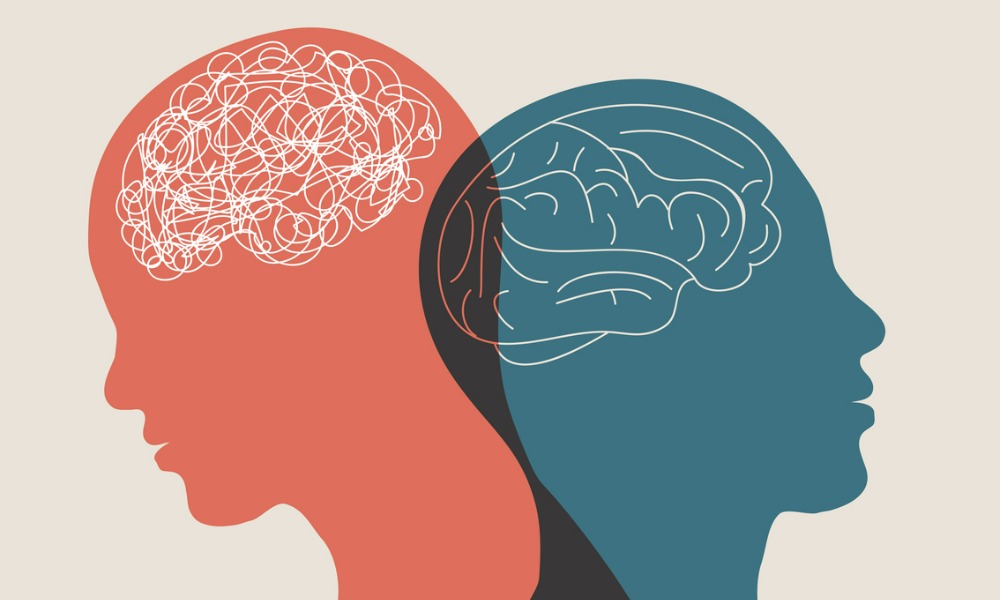Employers and benefits providers need to rethink what they're doing about mental illness in the workplace because the business impact is going to become more real and the options to do something about it are growing scarcer, says Adam Kelly, chief commercial officer at CloudMD.

Employers and benefits providers need to rethink what they're doing about mental illness in the workplace because the business impact is going to become more real and the options to do something about it are growing scarcer, says Adam Kelly, chief commercial officer at CloudMD.
In the CPBI Ontario ‘Re-thinking mental-health absence and disability management’ session, he said employers should care because there is limited support from the public health system when it comes to mental health and chronic mental health issues such as depression and anxiety and these are major reasons for long-term disability. Half of the disability claims among younger employees aged 18 to 35 are related to mental health and stress and burnout continue to drive employee turnover.
Currently, mental health is the number one driver of disability in Canada in terms of the total number of claims and days lost to disability.
This puts more pressure on workplaces which are expected to do more with less people.
Yet, “one of biggest challenges is scarcity of people to help. There’s not enough trained people to serve the marketplace and this was evident even before the pandemic,” he said.
Altogether, it means “we need to rethink what we are doing because the traditional model isn’t delivering on its promise. It is marked by poor quality of service, long wait times, a disconnected experience across public and private providers, and is transactional and product focused, not client focused. “You're in your doctor's office for five minutes. You come out with a drug therapy plan for six weeks and then you go back for an appointment. This short-term model of in-and-out is not for people dealing with complex mental health conditions. This is not an effective strategy for people that need help,” Kelly said.
A fundamental gap that is not currently addressed is disability that results from mental health issues. These can develop into chronic and disabling conditions such as major depressive disorders, anxiety disorders, trauma disorders, adjustment disorders, and stress disorders. While many employers offer EAP (employee assistant program) supports, these are not designed to treat chronic conditions. They are designed as short-term help only. Chronic conditions need a combination of pharma and therapy treatment and that treatment can be expensive and is not covered by public health programs.
Despite this, things are getting better. Many organizations have increased their coverage limits for mental health in their health plans. Digital innovations ‒ such as iCBT (internet-based cognitive behavioural therapy) ‒ are making treatment more affordable and accessible. The broader adoption of virtual therapy has also helped improve accessibility and several organizations are focusing on digital platforms to help treat chronic mental illness diseases.
And it is not just about prevention or keeping people off disability. There are many who, regardless what is done on the preventive side, still end up with a mental illness and go on disability. The goal is to find solutions for both preventing illness and reducing disability, even though these strategies are fundamentally different, he said.
In designing strategies for dealing with mental health in the workplace, there are a number of opportunities. Access to treatment needs to be simplified, regardless the condition or the severity of the illness. Support navigating the system is necessary because people often don’t know what they need or what is available. In addition, fast and reliable connection to a diverse and qualified network of health professionals is required.
And outcomes need to be measured. Measured care solutions need to be prioritized. If the data shows that programs work and are helping people get better, this needs to be measured. One of the obstacles for mental health strategies is “we don’t know if programs work because there is no data. We don’t know the return on investment and we aren’t seeing changes in datasets by virtue of the strategies we are putting in place,” said Kelly.
Ultimately, however, it comes down to “when people reach out their hand for help, help,” he said.



